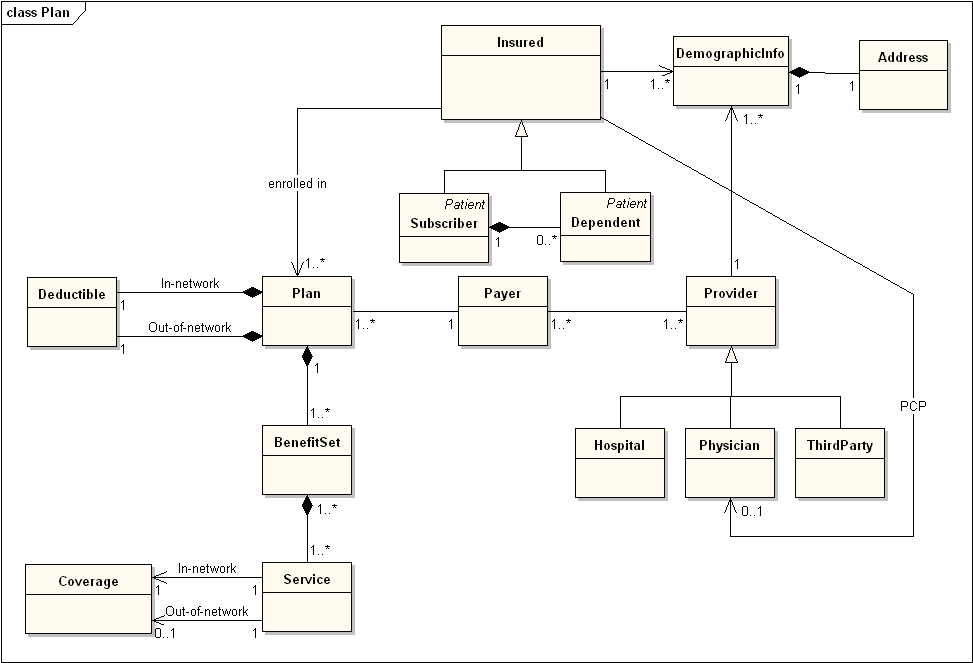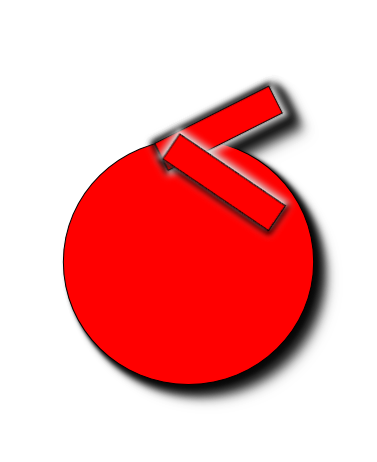|
Profile (UML)
A profile in the Unified Modeling Language (UML) provides a generic extension mechanism for customizing Unified Modeling Language, UML models for particular Domain model, domains and platforms. Extension mechanisms allow refining standard semantics in strictly additive manner, preventing them from contradicting standard semantics. Profiles are defined using stereotype (UML), stereotypes, tag definitions, and constraints which are applied to specific model elements, like Classes, Attributes, Operations, and Activities. A Profile is a collection of such extensions that collectively customize UML for a particular domain (e.g., aerospace, healthcare, financial) or platform (J2EE, .NET). Examples The UML Profile for XML is defined by David Carlson in the book "Modeling XML Applications with UML" pp. 310 and describes a set of extensions to basic UML model elements to enable accurate modeling of XSD schemas. SysML is an Object Management Group (OMG)-standardized profile of Unified ... [...More Info...] [...Related Items...] OR: [Wikipedia] [Google] [Baidu] |
Unified Modeling Language
The Unified Modeling Language (UML) is a general-purpose, developmental modeling language in the field of software engineering that is intended to provide a standard way to visualize the design of a system. The creation of UML was originally motivated by the desire to standardize the disparate notational systems and approaches to software design. It was developed at Rational Software in 1994–1995, with further development led by them through 1996. In 1997, UML was adopted as a standard by the Object Management Group (OMG), and has been managed by this organization ever since. In 2005, UML was also published by the International Organization for Standardization (ISO) as an approved ISO standard. Since then the standard has been periodically revised to cover the latest revision of UML. In software engineering, most practitioners do not use UML, but instead produce informal hand drawn diagrams; these diagrams, however, often include elements from UML. History Before UML 1 ... [...More Info...] [...Related Items...] OR: [Wikipedia] [Google] [Baidu] |
Domain Model
In software engineering, a domain model is a conceptual model of the domain that incorporates both behavior and data.Fowler, Martin. ''Patterns of Enterprise Application Architecture''. Addison Wesley, 2003, p. 116. In ontology engineering, a domain model is a formal representation of a knowledge domain with concepts, roles, datatypes, individuals, and rules, typically grounded in a description logic. Overview A domain model is a system of abstractions that describes selected aspects of a sphere of knowledge, influence or activity (a domainEvans, Eric ''Domain-Driven Design: Definitions and Pattern Summaries''. Domain Language Inc., 2006, p. 3.). The model can then be used to solve problems related to that domain. The domain model is a representation of meaningful real-world concepts pertinent to the domain that need to be modeled in software. The concepts include the data involved in the business and rules the business uses in relation to that data. A domain model levera ... [...More Info...] [...Related Items...] OR: [Wikipedia] [Google] [Baidu] |
Stereotype (UML)
A stereotype is one of three types of extensibility mechanisms in the Unified Modeling Language (UML), the other two being tags and constraints. They allow designers to extend the vocabulary of UML in order to create new model elements, derived from existing ones, but that have specific properties that are suitable for a particular domain or otherwise specialized usage. The nomenclature is derived from the original meaning of stereotype, used in printing. For example, when modeling a network you might need to have symbols for representing routers and hubs. By using stereotyped nodes you can make these things appear as primitive building blocks. Graphically, a stereotype is rendered as a name enclosed by guillemets (« » or, if guillemets proper are unavailable, ) and placed above the name of another element. In addition or alternatively it may be indicated by a specific icon. The icon image may even replace the entire UML symbol. For instance, in a class diagram stereotypes can b ... [...More Info...] [...Related Items...] OR: [Wikipedia] [Google] [Baidu] |
SysML
The Systems Modeling Language (SysML) is a general-purpose modeling language for systems engineering applications. It supports the specification, analysis, design, verification and validation of a broad range of systems and systems-of-systems. SysML was originally developed by an open source specification project, and includes an open source license for distribution and use. SysML is defined as an extension of a subset of the Unified Modeling Language (UML) using UML's profile mechanism. The language's extensions were designed to support systems engineering activities. Contrast with UML SysML offers several systems engineering specific improvements over UML, which has been developed as a software modeling language. These improvements include the following: * SysML's diagrams express system engineering concepts better due to the removal UML's software-centric restrictions and adds two new diagram types, requirement and parametric diagrams. The former can be used for requiremen ... [...More Info...] [...Related Items...] OR: [Wikipedia] [Google] [Baidu] |
Object Management Group
The Object Management Group (OMG) is a computer industry standardization, standards consortium. OMG Task Forces develop enterprise integration standards for a range of technologies. Business activities The goal of the OMG was a common portable and interoperable object model with methods and data that work using all types of development environments on all types of platforms. The group provides only specifications, not implementations. But before a specification can be accepted as a standard by the group, the members of the submitter team must guarantee that they will bring a conforming product to market within a year. This is an attempt to prevent unimplemented (and unimplementable) standards. Other private companies or open source groups are encouraged to produce conforming products and OMG is attempting to develop mechanisms to enforce true interoperability. OMG hosts four technical meetings per year for its members and interested nonmembers. The Technical Meetings provide ... [...More Info...] [...Related Items...] OR: [Wikipedia] [Google] [Baidu] |
System Engineering
Systems engineering is an interdisciplinary field of engineering and engineering management that focuses on how to design, integrate, and manage complex systems over their life cycles. At its core, systems engineering utilizes systems thinking principles to organize this body of knowledge. The individual outcome of such efforts, an engineered system, can be defined as a combination of components that work in synergy to collectively perform a useful function. Issues such as requirements engineering, reliability, logistics, coordination of different teams, testing and evaluation, maintainability and many other disciplines necessary for successful system design, development, implementation, and ultimate decommission become more difficult when dealing with large or complex projects. Systems engineering deals with work-processes, optimization methods, and risk management tools in such projects. It overlaps technical and human-centered disciplines such as industrial engineering, prod ... [...More Info...] [...Related Items...] OR: [Wikipedia] [Google] [Baidu] |
MARTE
Marte may refer to: *Marte, Nigeria, a Local Government Area in Borno State *Marte (surname), including a list of people with the name * C.D. Marte, a Mexican football club *C.D. Atlético Marte, a Salvadoran football club * ST ''Marte'', a tug in service with Wilson Son SA Comercio Industria, Brazil from 1966 *Marte (missile) Sea Killer is an Italian anti-ship missile family. The latest development of the system is known as Marte. Marte is a sea skimming, subsonic, anti-ship missile, it carries a semi-armour piercing warhead. It has been built in several versions, ..., anti-ship missile See also * Mars (other) {{disambig ... [...More Info...] [...Related Items...] OR: [Wikipedia] [Google] [Baidu] |
Stereotype (UML)
A stereotype is one of three types of extensibility mechanisms in the Unified Modeling Language (UML), the other two being tags and constraints. They allow designers to extend the vocabulary of UML in order to create new model elements, derived from existing ones, but that have specific properties that are suitable for a particular domain or otherwise specialized usage. The nomenclature is derived from the original meaning of stereotype, used in printing. For example, when modeling a network you might need to have symbols for representing routers and hubs. By using stereotyped nodes you can make these things appear as primitive building blocks. Graphically, a stereotype is rendered as a name enclosed by guillemets (« » or, if guillemets proper are unavailable, ) and placed above the name of another element. In addition or alternatively it may be indicated by a specific icon. The icon image may even replace the entire UML symbol. For instance, in a class diagram stereotypes can b ... [...More Info...] [...Related Items...] OR: [Wikipedia] [Google] [Baidu] |




